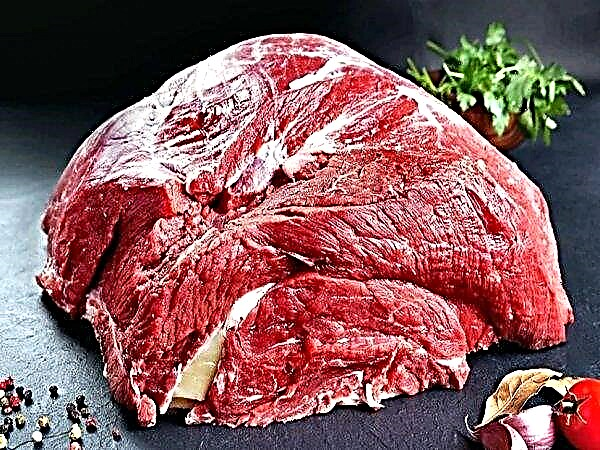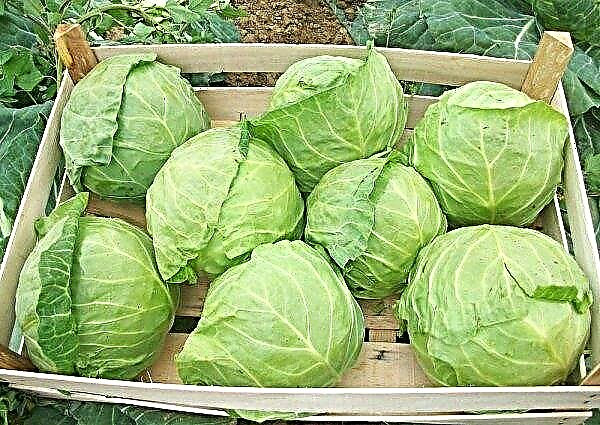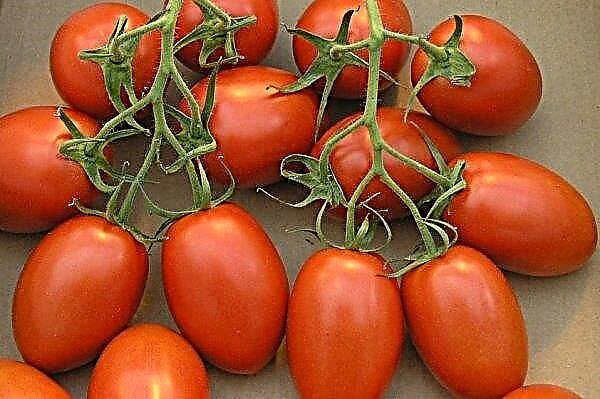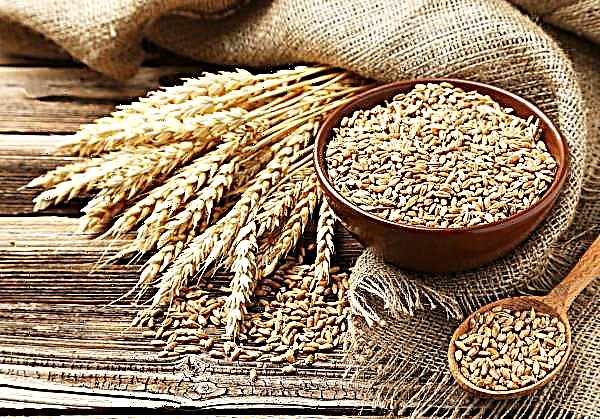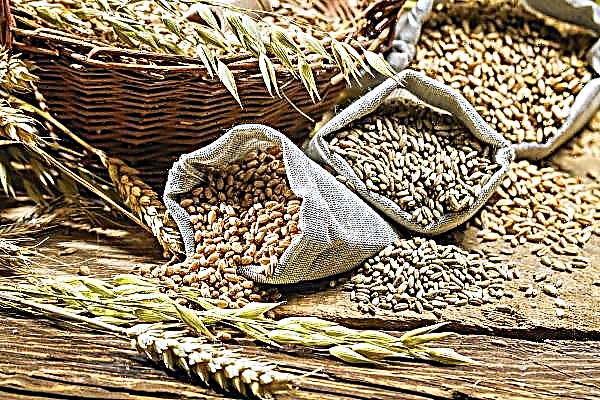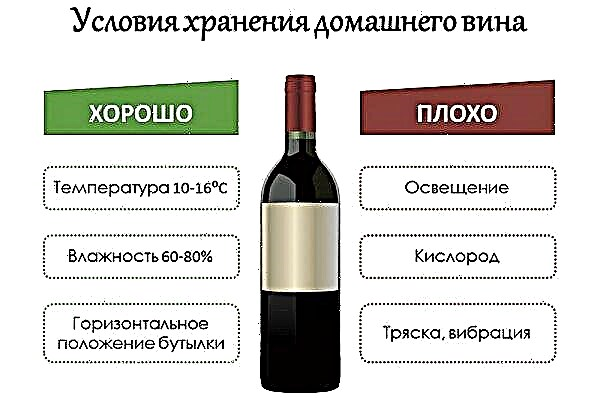To a person with no experience distinguishing wheat grains from barley grains is quite problematic. The difference between them is that the barley spike has longer tendrils, but some wheat varieties also have rather long spines and look like barley. Both of these crops are grown in the fields, from which they produce flour and cereals, bake bakery products. But there is a difference between these food grains, although at first glance it is hard to find.
The main differences
These crops are distinguished from each other by:
- appearance;
- growing rules;
- further use;
- composition and quantity of chemical elements;
- weight and beneficial properties.

Appearance
A detailed study clearly shows that these two cereals differ in color and other external characteristics.
| External signs | Barley | Wheat |
| Stem height | 60–80 cm | 50-150 cm |
| Stem | straight, naked | upright hollow |
| Number of vegetations | annual, perennial | annual |
| Leaves | length - 30 cm, width - 1.5–3 cm, flat, even, with small ears at the end | flat, broad-linear, length - 20–40 cm, width - from 1 to 2 cm, form lanceolate ears and tongue at the ends of the leaf plate |
| Ear and inflorescences | the spike is assembled in steps, 2-3 steps on a common axis | spike has 2 or 4 rows, loose, short tooth on top |
| Fetus | has a wide furrow, grows together with the upper pleural, yellow shade | ovoid, equipped with tuft and furrow on the back, light brown |
| Views | furcate, six-row, two-row | soft and hard |
Growing rules
These crops when grown in different ways relate to such important things as:
- humidity;
- the soil;
- temperature.
Did you know? Wheat is considered one of the first cereals domesticated by humans. It was grown in the Neolithic era, however, wild varieties were used in those days, which produced fewer fruits and quickly crumbled.
More precisely, you can see the table.
| Growth conditions | Barley | Wheat |
| climate | subcontinental, continental, can grow in cold areas and highlands | Warm, continental, for germination - +1 ... + 2 ° С, for seedlings - +3 ... + 4 ° С |
| Productivity | ripens quickly regardless of daylight hours | depends on daylight hours |
| The soil | not picky | humus - 1.7%, pH - 5.8 and higher, sod-podzolic, sandy loam, rarely peat-lowland. |
Scope of use
The grocery products that these crops are based on are also different. After primary processing, wheat is produced from:
- bread;
- pasta;
- confectionery products;
- cereals (bulgur, semolina, frick);
- animal feed (sanage, straw);
- flavor enhancers;
- alcohol (vodka, beer, whiskey).

Barley grain is traditionally used to produce barley and pearl barley, in addition, it is used for the manufacture of:
- flour;
- caffeine substitute;
- Malt
- food alcohol;
- feed for animals.
Important! All wheat cereal does not go to animal feed: only waste from it is added there, and barley has a special fodder variety intended for cattle.
The composition and calorie content of grain
Gluten - a substance without which it will not be possible to bake the dough: it will not be elastic and elastic. The higher the grade of flour, the more this substance is in it. Unfortunately, there is such a disease as gluten enteropathy. The gastrointestinal tract of people with a similar diagnosis does not tolerate gluten. For those who are losing weight and are prone to obesity, its overabundance is also contraindicated.

The second important substance needed for grain composition is selenium. This element affects cholesterol: bad reduces, good increases, fights against cardiovascular diseases and even oncology.
The content of these and other substances in cereal grains is as follows:
| Substance | Barley | Wheat |
| Water (per 100 g) | 14.5 g | 9.47 g |
| Protein (100 g) | 9.5 g | 11.31 g |
| Fats (per 100 g) | 2.5 g | 1.71 g |
| Carbohydrates (per 100 g) | 59 g | 63.7 g |
| Ash (in 100 g) | 2.5 g | 1.52 g |
| Gluten | 22,5% | 80% |
| Selenium (in 100 g) | 22.1 mcg | 29 mcg |

Grain weight difference
At the moment, there are a large number of options for calculating the weight of grain and its properties.
The most basic of them:
- Nature. It was known in ancient times, it is calculated by a device whose volume is 1 liter, in addition to weight, the shape of the grain and its volume are estimated.
- Goodness. Depends on the integrity of the grain shell.
- Hygroscopicity (humidity). Affects weight during shrinkage and storage.
Did you know? Barley cereal is located next to humanity throughout its history: it is mentioned about 20 times in the Bible, it was found in ancient Egyptian and Greek graves.
In the described cereals, these indicators are different:
| Property | Barley | Wheat |
| Nature | 605 | 785 |
| Duty rate (weight 1 m³ / kg) | 45–55% | 35–45% |
| Hygroscopicity | 40,2% | 40,8% |
| Weight in a 10 liter tank | 6 kg | 7.7 kg |
What is more useful
Which of the cereals is more useful is difficult to evaluate. Championship can be given to wheat, but not because the elements contained in it bring more benefits, but because people use it more often and more widely than barley.
The greatest benefit can be achieved by harmoniously using both of these cereal products.. Do not forget that barley flour is rarely used without the addition of wheat. And without barley cereal carbohydrates, there will not be a long sensation of satiety that they give.

Beneficial features
The beneficial properties of wheat are undeniable - it is not for nothing that it has been grown since ancient times. Wheat grain is used not only in the food industry, but also in medicine.
- Various components and derivatives of this cereal help from different problems:
- Bran. They help to fight excess weight, a decoction based on them is used to nourish the skin.
- Sprouted grain. It normalizes the acid-base balance, improves digestion, removes toxins from the body, increases the body's resistance, fights oncology, strengthens the cardiovascular system.
- Decoctions of stems. They fight burns, accelerate wound healing.
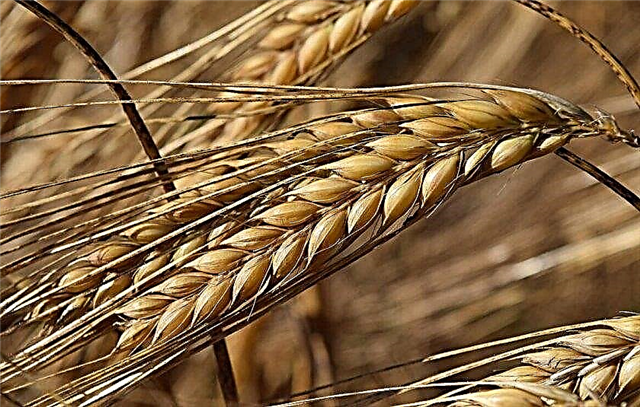 For medical purposes, barley is used as a tool that lowers blood cholesterol and cleanses the body of harmful substances. It has a beneficial effect on the intestines, improving digestion.
For medical purposes, barley is used as a tool that lowers blood cholesterol and cleanses the body of harmful substances. It has a beneficial effect on the intestines, improving digestion.
This cereal is especially widely used in folk medicine. There are various recipes based on this cereal for treatment:
- bronchitis;
- sore throats;
- pharyngitis;
- pneumonia;
- colitis;
- ulcers;
- psoriasis and eczema.
Beauticians also widely use barley, making creams, balms and shampoos out of it.
Important! As a rule, most contraindications arise due to the high content of gluten in the product. There are a number of products labeled — "Gluten free".
Possible harm and contraindications
- Despite the large number of useful properties, these cereals have contraindications. They are not recommended for people with:
- stomach ulcer;
- gastritis;
- bowel disorder;
- problems in digesting food;
- individual intolerance;
- problems in the oral cavity.
What is better to lose weight
The more dietary of these two grains is barley. It has a lot of fiber, less gluten and carbohydrates, which makes it useful for obese people. From this cereal product barley groats and pearl barley are produced, which improve intestinal function and saturate it without the formation of extra pounds.

Wheat is traditionally considered high-calorie, because most bakery and confectionery products are made from it. In addition, most alcoholic beverages also can not do without this cereal. But whole wheat-based cereals normalize excess weight and help fight obesity.
Despite the differences in these crops in the fields of application, useful properties and appearance, they are next to people from ancient times and will feed and treat humanity for a very long time.

